Starting Your Budget Patio Garden
You can turn your apartment patio into a green haven without breaking the bank. Begin with vertical gardening; use old pallets—often free from local stores—to create wall-mounted planters, measuring about 4 feet tall by 2 feet wide. Secure them with screws for stability. Curious how to maximize every inch of space with even cheaper tricks? Stick around for practical, wallet-friendly tips to transform your outdoor nook.
Contents
- 1 Vertical Gardening With Repurposed Materials
- 2 Container Planting on a Dime
- 3 Growing Herbs for Pennies
- 4 DIY Pallet Planters for Less
- 5 Thrifty Succulent Displays
- 6 Upcycled Furniture as Garden Accents
- 7 Budget-Friendly Hanging Baskets
- 8 Low-Cost Ground Cover Solutions
- 9 Seed Starting for Savings
- 10 Community Swaps for Plant Variety
Vertical Gardening With Repurposed Materials
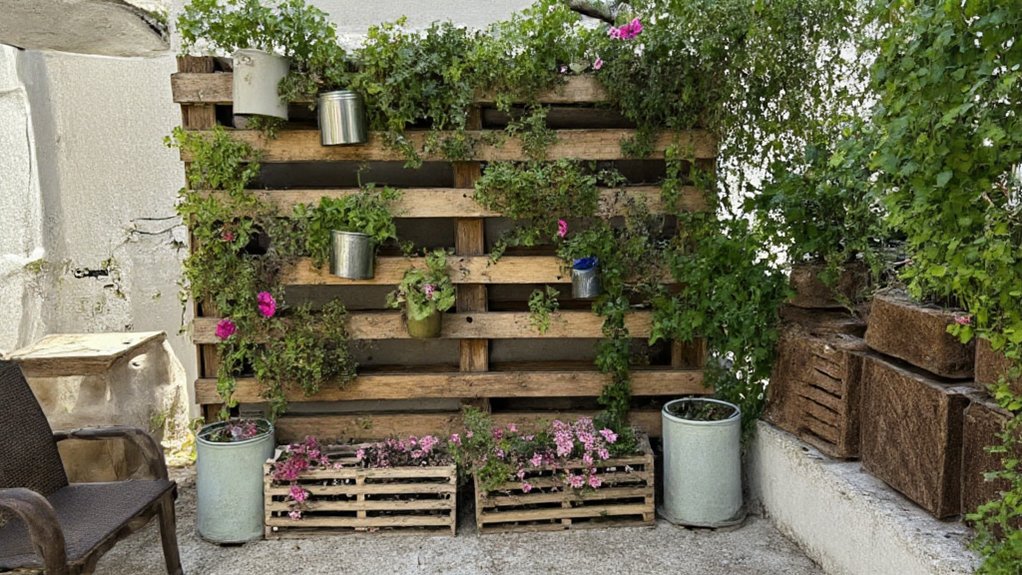
Vertical gardening with repurposed materials is an innovative and space-saving way to create a lush patio garden in small apartment spaces. By utilizing vertical surfaces such as walls, fences, or even freestanding structures, you can grow plants upwards instead of outwards, maximizing limited space. Repurposed materials like old pallets, wooden crates, mason jars, or even plastic bottles can be transformed into planters, offering an eco-friendly and budget-conscious approach to gardening.
To get started, secure a sturdy base such as a pallet or wire grid to a wall or fence, ensuring it can support the weight of soil and plants. Attach containers or pockets made from repurposed items, fill them with potting soil, and plant herbs, succulents, or small flowers that thrive in confined spaces. This method not only adds greenery to your patio but also serves as a creative way to recycle materials, making your garden both functional and visually appealing.
Container Planting on a Dime
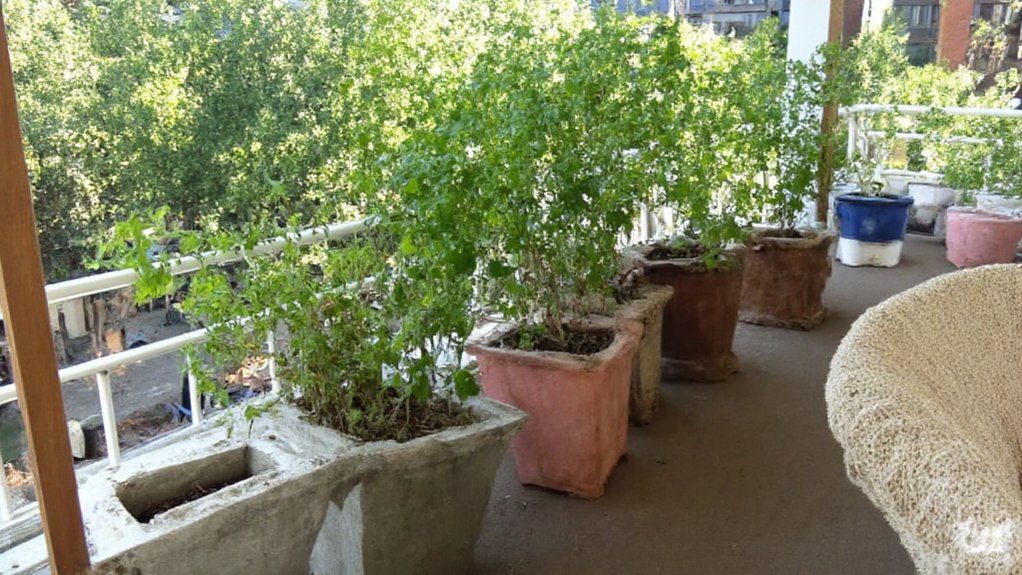
Container planting on a dime is an affordable and creative way to transform your apartment patio into a lush, green oasis without breaking the bank. By using budget-friendly materials and repurposed items, you can create beautiful planters for your flowers, herbs, or small vegetables. Look for inexpensive containers at thrift stores, dollar stores, or even repurpose household items like old buckets, crates, or tin cans to serve as unique planters.
To keep costs low, opt for affordable potting soil or mix your own using compost and garden dirt, and start plants from seeds rather than buying mature plants. You can also propagate cuttings from friends’ or neighbors’ gardens for free. With a little ingenuity, such as using broken pottery or pebbles for drainage, you can build a thriving container garden that adds charm to your patio on a tight budget.
Growing Herbs for Pennies

Growing herbs for pennies is an incredibly cost-effective way to enhance your apartment patio garden while adding fresh flavors to your meals. Many herbs, such as basil, parsley, mint, and chives, can be started from seeds or small cuttings, which are often available for just a few cents each at local nurseries or even grocery stores. By using recycled containers like old pots, mason jars, or tin cans as planters, you can keep costs minimal while creating a sustainable and charming herb garden on your patio.
Additionally, herbs are low-maintenance plants that thrive in small spaces with adequate sunlight and well-drained soil, making them perfect for apartment dwellers. Once established, many herbs can be harvested repeatedly, providing a continuous supply for your kitchen at a fraction of the cost of store-bought options. This budget-friendly gardening approach not only saves money but also brings the satisfaction of growing your own food right outside your door.
DIY Pallet Planters for Less

Creating DIY pallet planters is an affordable and creative way to enhance your apartment patio garden. Wooden pallets, often available for free or at a low cost from local businesses or warehouses, can be repurposed into stylish and functional planters. With just a few basic tools and materials like a hammer, nails, sandpaper, and some paint or sealant, you can transform a pallet into a vertical garden or a rustic container for your plants.
To start, sand down rough edges to prevent splinters, then secure any loose boards with nails. Line the inside with landscape fabric or plastic to hold soil, leaving drainage holes at the bottom. Fill with potting mix and plant your favorite herbs, flowers, or small vegetables. These pallet planters can be leaned against a wall or mounted for a space-saving solution, making them perfect for small patio spaces while adding a touch of charm to your outdoor area.
Thrifty Succulent Displays
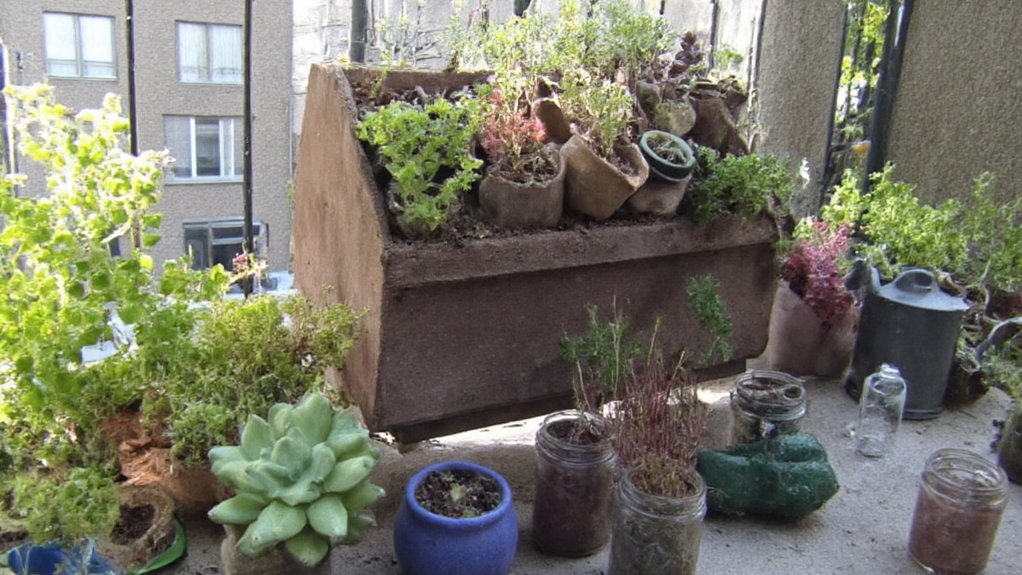
Thrifty succulent displays are an excellent way to create stunning apartment patio gardens without breaking the bank. Succulents are low-maintenance, drought-tolerant plants that come in a variety of shapes, sizes, and colors, making them ideal for small spaces and budget-friendly gardening. By using affordable or repurposed containers like mason jars, tin cans, or thrift store finds, you can craft unique and eye-catching arrangements that add personality to your patio.
To keep costs down, consider propagating succulents from cuttings or purchasing small plants from local nurseries or discount stores. Grouping several succulents together in a single container can create a lush, full look, while mixing textures and heights adds visual interest. With minimal watering needs and the ability to thrive in sunny spots, thrifty succulent displays are a practical and stylish addition to any apartment patio.
Upcycled Furniture as Garden Accents
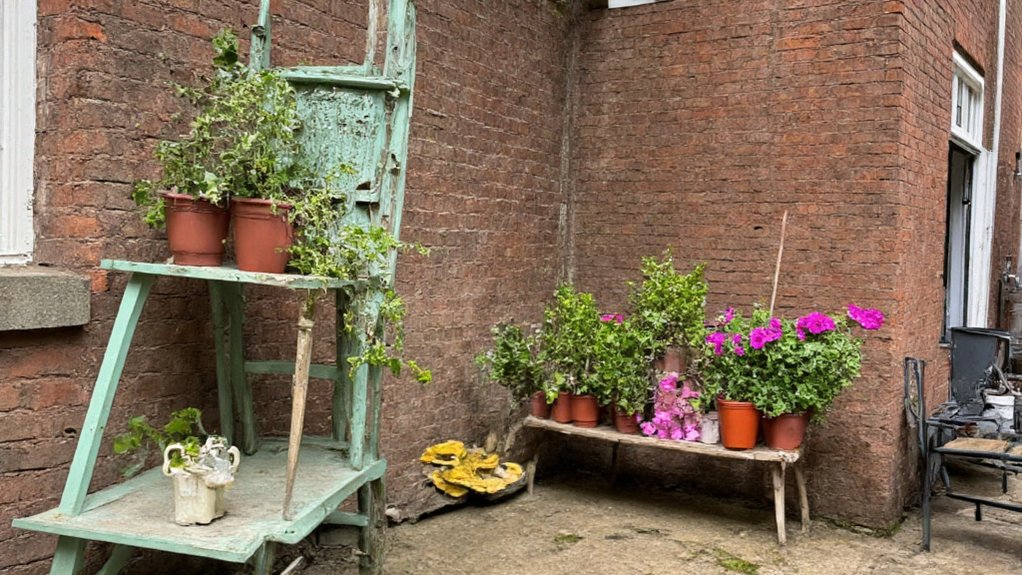
Upcycled furniture can transform an apartment patio garden into a unique and personalized space. By repurposing old or discarded pieces like chairs, tables, or shelves, you can create functional and decorative accents that add character while being budget-friendly and eco-conscious. For instance, an old wooden chair can be painted and used as a plant stand, or a worn-out dresser can be turned into a vertical garden by placing potted plants in its drawers.
This approach not only reduces waste but also allows for creative expression through DIY projects. Adding a coat of weather-resistant paint or sealant guarantees the furniture withstands outdoor conditions, blending seamlessly with the natural elements of your garden. Upcycled furniture pieces can serve as focal points or practical storage solutions, making your small patio both stylish and sustainable.
Budget-Friendly Hanging Baskets

Creating budget-friendly hanging baskets for your apartment patio garden is an excellent way to add greenery and charm without breaking the bank. Start by sourcing affordable materials, such as plastic or wire baskets, which can often be found at dollar stores or thrift shops. You can also repurpose items like old colanders or buckets by adding drainage holes and lining them with inexpensive coconut coir or moss to retain moisture. Choose cost-effective plants like petunias, marigolds, or trailing ivy, which are hardy, easy to care for, and often available at discount garden centers or as starter plants.
To keep costs down further, consider propagating plants from cuttings of existing plants or swapping with friends and neighbors for variety. Use budget soil mixes and add compost from kitchen scraps to enrich the soil naturally. Hang your baskets using sturdy, low-cost materials like twine or repurposed chains, ensuring they are securely fastened to withstand wind and weight. With a little creativity, you can transform your patio into a lush, vertical garden on a shoestring budget.
Low-Cost Ground Cover Solutions

Low-cost ground cover solutions are an excellent way to enhance the look of an apartment patio garden without breaking the bank. One popular option is using mulch, such as wood chips or bark, which is affordable and widely available at garden centers or even for free from local tree services. Mulch not only covers bare soil to create a tidy appearance but also helps retain moisture and suppress weeds, benefiting any plants in the area.
Another budget-friendly ground cover idea is gravel or pebbles, which can be purchased in bulk for a low cost. These materials provide a clean, modern look to a patio garden and are easy to spread over the desired area. Additionally, repurposing materials like broken pottery, glass beads, or even flattened bottle caps can add a unique, artistic touch to the ground cover while keeping expenses minimal.
Seed Starting for Savings
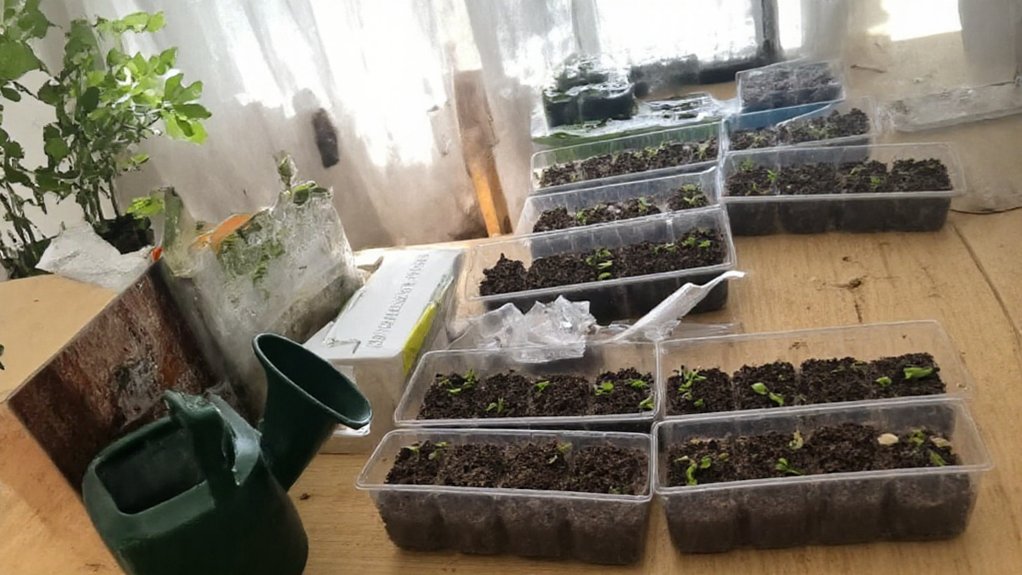
Starting seeds indoors is a cost-effective way to grow a variety of plants for your apartment patio garden. By purchasing seeds instead of mature plants, you can save money while enjoying the satisfaction of nurturing your garden from the very beginning. Seeds are typically much cheaper than buying established plants from a nursery, and a single packet can often yield dozens of plants, providing an abundance of greenery or produce for a fraction of the cost.
To start seeds, you’ll need basic supplies like seed trays, potting soil, and a sunny spot or grow light. Begin by planting seeds according to the packet instructions, ensuring they have adequate moisture and warmth to germinate. This method not only cuts down on expenses but also allows you to experiment with a wider range of plant varieties that may not be available as seedlings at local stores, giving your patio garden a unique and personalized touch.
Community Swaps for Plant Variety
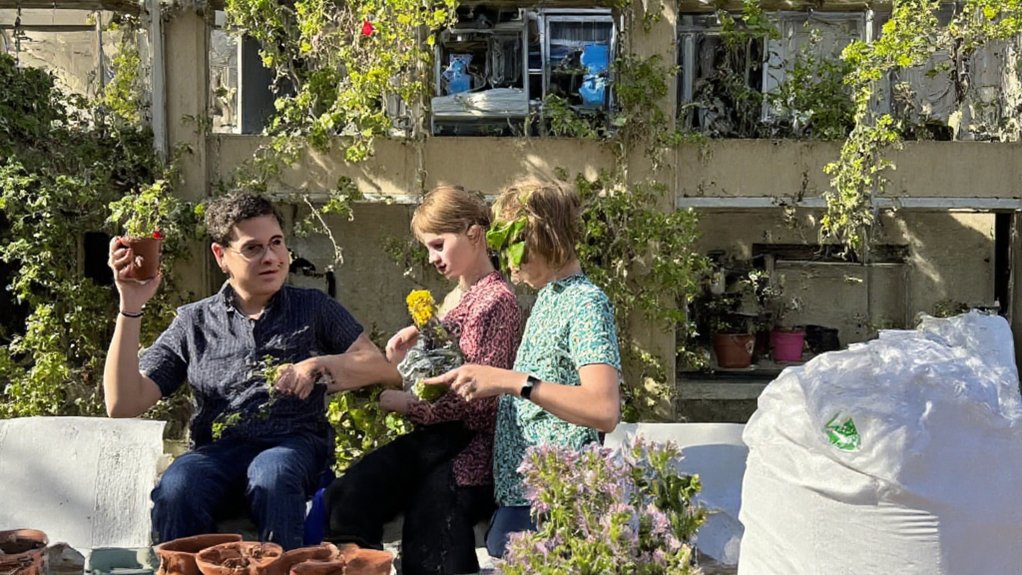
Community swaps for plant variety are a fantastic way for apartment dwellers to diversify their patio gardens while fostering a sense of connection with neighbors. These events involve residents coming together to exchange plants, cuttings, or seeds, allowing everyone to introduce new species or varieties to their limited growing spaces without additional cost.
Participating in a swap not only helps gardeners acquire unique or hard-to-find plants but also encourages sharing tips and advice on care and cultivation. It’s an opportunity to build a supportive network, learn from fellow plant enthusiasts, and create a more vibrant and varied patio garden community.
